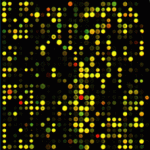Genomics
|
3 september 2019 20:01:09 |
| Large-scale genome analysis of bovine commensal Escherichia coli reveals that bovine-adapted E. coli lineages are serving as evolutionary sources of the emergence of human intestinal pathogenic strains [RESEARCH] (Genome Research) |
|
Tweet How pathogens evolve their virulence to humans in nature is a scientific issue of great medical and biological importance. Shiga toxin (Stx)–producing Escherichia coli (STEC) and enteropathogenic E. coli (EPEC) are the major foodborne pathogens that can cause hemolytic uremic syndrome and infantile diarrhea, respectively. The locus of enterocyte effacement (LEE)–encoded type 3 secretion system (T3SS) is the major virulence determinant of EPEC and is also possessed by major STEC lineages. Cattle are thought to be the primary reservoir of STEC and EPEC. However, genome sequences of bovine commensal E. coli are limited, and the emerging process of STEC and EPEC is largely unknown. Here, we performed a large-scale genomic comparison of bovine commensal E. coli with human commensal and clinical strains, including EPEC and STEC, at a global level. The analyses identified two distinct lineages, in which bovine and human commensal strains are enriched, respectively, and revealed that STEC and EPEC strains have emerged in multiple sublineages of the bovine-associated lineage. In addition to the bovine-associated lineage-specific genes, including fimbriae, capsule, and nutrition utilization genes, specific virulence gene communities have been accumulated in stx- and LEE-positive strains, respectively, with notable overlaps of community members. Functional associations of these genes probably confer benefits to these E. coli strains in inhabiting and/or adapting to the bovine intestinal environment and drive their evolution to highly virulent human pathogens under the bovine-adapted genetic background. Our data highlight the importance of large-scale genome sequencing of animal strains in the studies of zoonotic pathogens. |
| 221 viewsCategory: Bioinformatics, Genetics, Genomics |
 Unique genetic basis of the distinct antibiotic potency of high acetic acid production in the probiotic yeast Saccharomyces cerevisiae var. boulardii [RESEARCH] (Genome Research) Unique genetic basis of the distinct antibiotic potency of high acetic acid production in the probiotic yeast Saccharomyces cerevisiae var. boulardii [RESEARCH] (Genome Research)Identifying loci under positive selection in complex population histories [METHOD] (Genome Research) 
|
| blog comments powered by Disqus |
MyJournals.org
The latest issues of all your favorite science journals on one page
The latest issues of all your favorite science journals on one page



